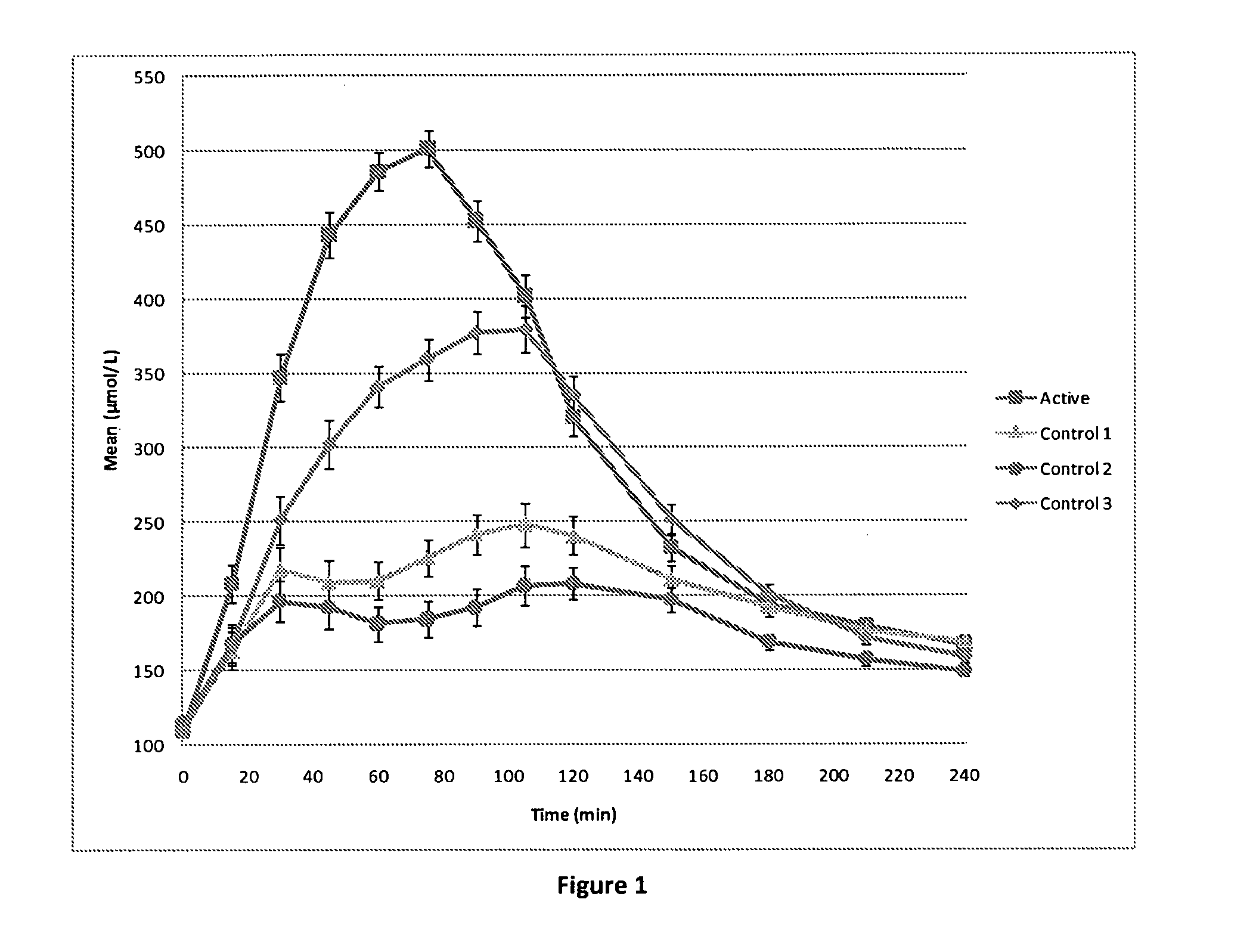Low-caloric high-protein nutritional composition for the stimulation of muscle protein synthesis
a high-protein, low-caloric technology, applied in the direction of plant growth regulators, food preparations, biocide, etc., can solve the imbalance between muscle protein synthesis and breakdown, failure to maintain muscle mass, muscle wasting, etc., to achieve the effect of improving the bioavailability of amino acids, low-caloric, and achieving faster circulation
- Summary
- Abstract
- Description
- Claims
- Application Information
AI Technical Summary
Benefits of technology
Problems solved by technology
Method used
Image
Examples
Embodiment Construction
[0010]According to one aspect, the present invention is concerned with a nutritional composition comprising per 100 kcal:[0011](i) at least about 12 g of proteinaceous matter which comprises at least about 80 weight % of whey protein, relative to the total proteinaceous matter, and which comprises at least about 11 weight % of leucine, relative to the total proteinaceous matter, of which at least about 20 weight % is in a free form, relative to the total leucine,[0012](ii) a source of fat and a source of digestible carbohydrates,
for use in the prevention or treatment of a disease or condition which involves muscle decline in a mammal, wherein the nutritional composition is administered as 1 to 2 servings daily, each serving comprising between 80 and 200 kcal.
[0013]In the context of this application, the term “at least” also includes the starting point of the open range. For example, an amount of “at least 95 weight %” means any amount equal to 95 weight % or above.
[0014]In the conte...
PUM
| Property | Measurement | Unit |
|---|---|---|
| weight | aaaaa | aaaaa |
| weight % | aaaaa | aaaaa |
| weight % | aaaaa | aaaaa |
Abstract
Description
Claims
Application Information
 Login to View More
Login to View More - R&D
- Intellectual Property
- Life Sciences
- Materials
- Tech Scout
- Unparalleled Data Quality
- Higher Quality Content
- 60% Fewer Hallucinations
Browse by: Latest US Patents, China's latest patents, Technical Efficacy Thesaurus, Application Domain, Technology Topic, Popular Technical Reports.
© 2025 PatSnap. All rights reserved.Legal|Privacy policy|Modern Slavery Act Transparency Statement|Sitemap|About US| Contact US: help@patsnap.com



